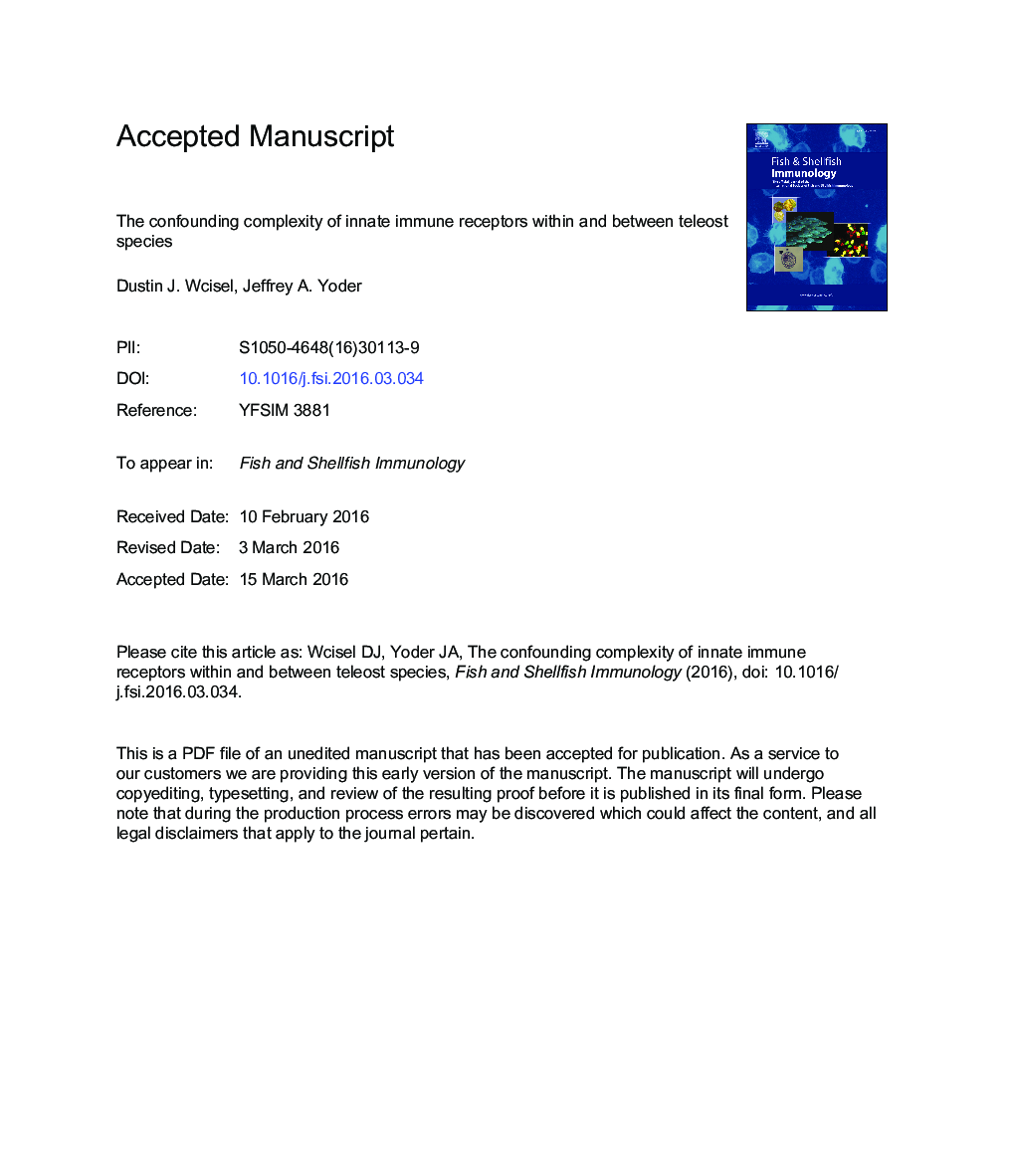| Article ID | Journal | Published Year | Pages | File Type |
|---|---|---|---|---|
| 8499149 | Fish & Shellfish Immunology | 2016 | 41 Pages |
Abstract
Teleost genomes encode multiple multigene families of immunoglobulin domain-containing innate immune receptors (IIIRs) with unknown function and no clear mammalian orthologs. However, the genomic organization of IIIR gene clusters and the structure and signaling motifs of the proteins they encode are similar to those of mammalian innate immune receptor families such as the killer cell immunoglobulin-like receptors (KIRs), leukocyte immunoglobulin-like receptors (LILRs), Fc receptors, triggering receptors expressed on myeloid cells (TREMs) and CD300s. Teleost IIIRs include novel immune-type receptors (NITRs); diverse immunoglobulin domain containing proteins (DICPs); polymeric immunoglobulin receptor-like proteins (PIGRLs); novel immunoglobulin-like transcripts (NILTs) and leukocyte immune-type receptors (LITRs). The accumulation of genomic sequence data has revealed that IIIR gene clusters in zebrafish display haplotypic and gene content variation. This intraspecific genetic variation, as well as significant interspecific variation, frequently confounds the identification of definitive orthologous IIIR sequences between teleost species. Nevertheless, by defining which teleost lineages encode (and do not encode) different IIIR families, predictions can be made about the presence (or absence) of specific IIIR families in each teleost lineage. It is anticipated that further investigations into available genomic resources and the sequencing of a variety of multiple teleost genomes will identify additional IIIR families and permit the modeling of the evolutionary origins of IIIRs.
Keywords
KirITIMITAMWGDLeukocyte immune-type receptorsLILRpIgRimmunoreceptor tyrosine-based inhibition motifimmunoglobulin whole genome duplicationTREMimmunoreceptor tyrosine-based activation motiftriggering receptor expressed on myeloid cellsleukocyte immunoglobulin-like receptorkiller cell immunoglobulin-like receptorpolymeric immunoglobulin receptor
Related Topics
Life Sciences
Agricultural and Biological Sciences
Aquatic Science
Authors
Dustin J. Wcisel, Jeffrey A. Yoder,
